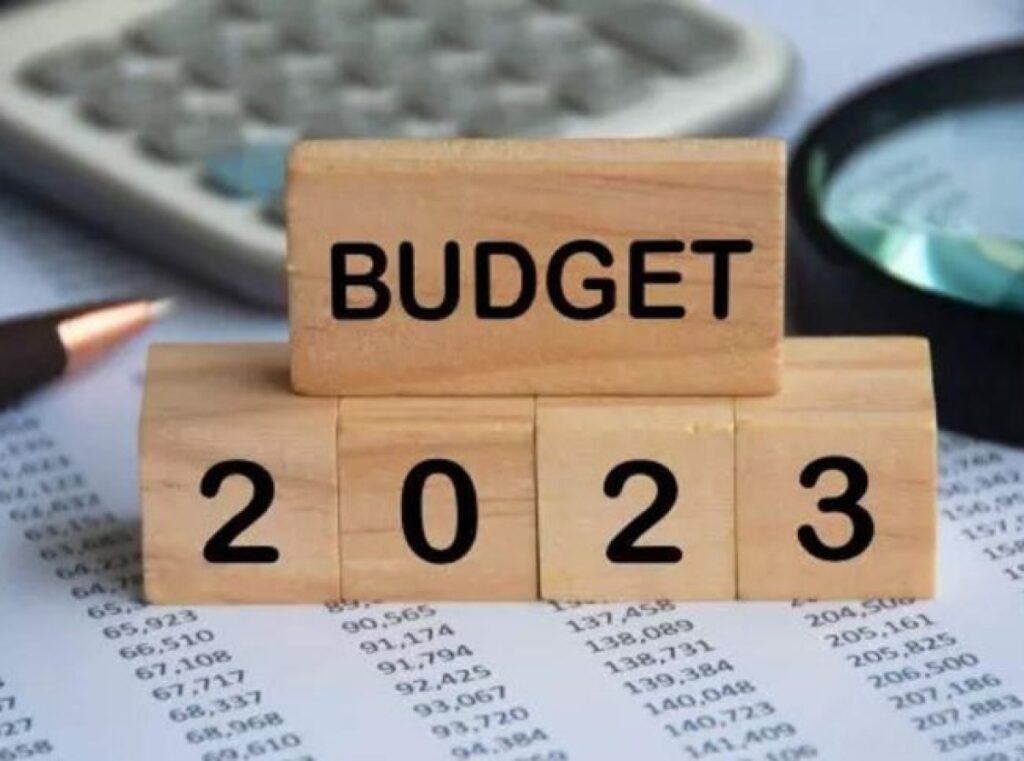Main Budgetary Strategy: Hike in Capital Expenditure
As discussed in the Part 4 of this article series, the budget outlay is just 7.5% above last year — which means it is stagnant in real terms. And the budgetary outlay as a percentage of GDP is actually lower as compared to last year. In fact it has consistently fallen for the last 3 years, and is lower than that for 2020–21 by nearly 3 percentage points — that is huge!
Within the limited budget outlay, Finance Minister Nirmala Sitharaman has announced a hike in capital expenditure (or capex) — of a whopping 37.4%. This is the third year in succession that she has announced a big hike in capital expenditure, while the increase in budget outlay has been much less (see Table 16). With the result that the capital expenditure as a percentage of budget outlay has gone up steadily from 12.2% in 2020–21 Actuals and 15.6% in 2021–22 Actuals, to 17.4% in 2022–23 RE, and to 22.2% in this year’s budget estimate.
Last year, she had claimed in her budget speech that the increase in capex made in 2021–22 had led to economic recovery in FY22, and expressed the hope that in the coming FY23 too, the proposed increase in capex would lead to “speedy and sustained economic revival” as well as creation of employment opportunities. In her budget speech this year (2023), she again makes the same assertion, that the big increase in capex will “enhance growth potential and job creation”.
Table 16: Budget Outlay and Capital Expenditure, 2019–20 to 2023–24 (Rs cr)
| 2020–21 A | 2021–22 A | 2022–23 RE | 2023–24 BE | |
| Capital Expenditure (Capex) | 4,26,317 | 5,92,874 | 7,28,274 | 10,00,961 |
| Increase in Capex over previous year | 39.1% | 22.8% | 37.4% | |
| Budget Outlay | 35,09,836 | 37,93,801 | 41,87,232 | 45,03,097 |
| Increase in Budget Outlay over previous year | 8.1% | 10.4% | 7.5% | |
| Capex as % of Budget Outlay | 12.1% | 15.6% | 17.4% | 22.2% |
| Capex as % of GDP | 2.15% | 2.51% | 2.67% | 3.32% |
| Increase in GDP over previous year | –6.6% | 8.7% | 7% |
The FM is simply blustering. A huge increase in the government’s capital expenditure, without an accompanying increase in the budget outlay, is not going to lead to economic growth. Let us explain — it is actually simple economic common sense.
For an economy suffering from low growth and a huge unemployment crisis, to revive the economy. what is needed is an increase in overall demand in the economy. But demand is not increasing because of huge poverty and unemployment in the country. If there is no increase in demand, then capitalists are not going to increase their investment in industries, despite whatever incentives the government gives them. That is why capacity utilisation in industry has remained more or less stagnant at 60–70% for the past several years. This only means that the subsidies being given by the government to the private sector in the form of increase in government capital expenditure is simply being swallowed up by the capitalists, without increasing investment.
Therefore, what is needed to give the economy a big boost is not rise in capex, but a huge rise in government budget outlay. But the increase in budget outlay over the past years has been meagre.
This simple economics principle is also proven from the experience of the last 2 years. While in 2021–22, the capital expenditure went up by nearly 40%, the budget outlay went up by only 8.1%. Then, last year, 2022–23, while the increase in capex was a less ambitious 22.8%, the budget outlay went up by less than half of that, 10.4% (see Table 16). These huge increases in capex have not led to any pickup in industrial production, nor have they led to any significant economic growth — because of the meagre increase in budget outlay.
Industrial Production Slowing Down
According to recent figures released by the Ministry of Statistics and Programme Implementation, industrial growth in 2022–23 fell to 5.1% percent as against 11.4% in 2021–22. Since the double digit growth in 2021–22 was after a steep contraction of –8.4% in 2020–21, the average industrial growth in the post-pandemic period (2022–23 over 2019–20) works out to just 2.4%.[1] This is even lower than the average annual pre-pandemic growth rate of 3.2% between 2011–12 and 2019–20. That itself was also extremely low, and was lower than the average annual industrial growth rate over any previous period with comparable end-years.[2] The portends for the future too are not good. The latest figures released by the CSO say industrial output grew by a dismal 1.1% in March 2023. Clearly, Modinomics is only pushing the economy deeper and deeper into stagnation.
Within the neoliberal economic framework, the economic crisis is not going to go away anytime soon. Probably out of frustration that the government’s policy measures, including massive mindboggling transfers to corporate houses, were not leading to larger industrial investment, FM Nirmala Sitharaman, in a speech in September 2012, asked industry captains what is holding them back from investing in manufacturing? Modi and his Cabinet Ministers probably believe that solution to every problem can be found by invoking ‘Bajrang Bali’. And so the FM exhorted India Inc., “You don’t believe in your own capacity, in your own strength and there has got to be someone standing next to you and say you are Hanuman, do it? Who is that person who is going to tell Hanuman? It can’t certainly be the government.”[3]
GDP Growth Rate Near Zero
As regards the GDP growth rate: as we saw in Part 2 of this article series, even going by the official figures, average GDP growth for the past 3 years (2022–23 as compared to 2019–20) is just 2.8%. Further, as we have shown in that article, because of these official GDP figures do not take into consideration the collapse of the unorganised sector, the average real growth in the 3 years since 2019–20 may have been zero!
Job Creation Scenario
Let us now examine the other argument of the FM, that increase in capex would lead to job creation. In this year’s Union Budget, the increase in capex is a huge 37.4%, while the increase in total budgeted government expenditure over last year is by only 7.5%. This is what happened in the past 2 years too. This obviously means that the FM has been cutting spending on some other heads in order to increase capital expenditure. As we show in Part 6 of this article series, the FM has compensated for the increase in capex in her budgets for 2021–22 to 2023–24 by sharply reducing social sector spending.
It is well established economics that rupee for rupee, social sector expenditure is more employment generating than public capital expenditure. (Furthermore, in a situation where the country is facing such a terrible unemployment and poverty crisis, social sector expenditure directly benefits the working people. In the face of lack of demand due to poverty and unemployment, capex is not going to lead to increase in private investment as argued above; but increase in social sector expenditures puts purchasing power in the hands of people, and so pushes the private sector to invest in creating productive capacity, thereby leading to employment generation.) Not only that, much of the capital expenditure only goes towards boosting imports of capital goods, rather than strengthening domestic production. This further reduces the employment generation that should have taken place with increase in capex.
This is why, despite the huge increase in capex in the last 2 budgets, total jobs in the economy have remained virtually stagnant (total number of employed were 39.84 crore in end-2019, and had increased to just 39.88 crore in end-2022) (See Table 6 in Part 2 of this article series [4])!
Of the increased capital expenditure in budget 2021–22, budget 2022–23 and now in this year’s budget, nearly 25% has gone to the railways (Table 17). Yet there has been no job creation in the railways. Even the vacant posts are not being filled — according to a recent newsreport that cited a reply given in Parliament, the Indian Railways has 3.12 lakh non-gazetted posts lying vacant across the country.[5] Then where is the money being given to the railways as capital investment going? It is most probably going as subsidies to help the private sector take over railways.
Table 17: Capital Expenditure in the Union Budget, 2020–21 to 2023–24 (Rs cr)
| 2020–21 A | 2021–22 A | 2022–23 RE | 2023–24 BE | |
| Capital Expenditure (Capex) | 4,26,317 | 5,92,874 | 7,28,274 | 10,00,961 |
| of which: | ||||
| Ministry of Railways (1) | 1,17,271 | 1,37,100 | 1,59,100 | 2,40,000 |
| Ministry of Roads and Highways (2) | 1,13,312 | 1,87,744 | 2,06,303 | 2,58,606 |
| (1+2) as % of Total Capex | 54.1% | 54.8% | 50.2% | 49.8% |
That the FM is not really concerned about the unemployment crisis, is also borne out by another important fact. Probably the most important job creation scheme in the budget is the MGNREGA, which has been a lifeline for the poor in the face of the terrible unemployment crisis gripping the rural areas. However, of the various cuts made in the government’s social sector expenditures, one of the biggest cuts has been made in budget allocation for MGNREGA. Clearly, employment generation is not at all a concern of the Union Finance Minister.
Then why is the FM increasing capex so hugely? The real reason is — it is yet one more way of transferring public funds to big corporate houses (we have discussed this issue in considerable detail in Part 3 of this article series). Most of these transfers take place in the name of public–private–partnership, wherein the government gives huge subsidies — ‘incentives’ in official language — to the private sector in the name of promoting investment in infrastructure. To give a simple example: one-fourth of the capex is for Ministry of Roads and Highways (Table 17). But the government does not build many roads and highways anymore! Most of the expressways, high speed roads, flyovers, flyovers over flyovers, etc. being built across the country are being built by the private sector with subsidies given by the government. This only means that most of the capital expenditure shown in the budget outlay for Ministry of Roads and Highways is going to be transferred to the private sector as grants!
Notes
1. Our calculation, from figures given in: “Table 28: Index Numbers of Industrial Production”, https://rbidocs.rbi.org.in; and “Quick Estimates of Index of Industrial Production and Use-Based Index for the Month of March 2023”, Press Release, 12 May 2023, https://www.mospi.gov.in.
2. Prabhat Patnaik, “Why Has India’s Industrial Economy Become Stagnant?” 25 December 2022, https://www.newsclick.in.
3. “What Is Holding Back Your Investments: FM Asks India Inc”, 13 September 2022, https://www.thehindubusinessline.com.
4. Neeraj Jain, “Budget 2023–24: What Is in it for the People? Part 2: The Economic Situation in 2022–23”, Janata Weekly, 16 April 2023, https://janataweekly.org.
5. “Indian Railways Has Over 3.12 Lakh Posts Lying Vacant: Government Data”, The Wire, 10 January 2023, https://thewire.in.




